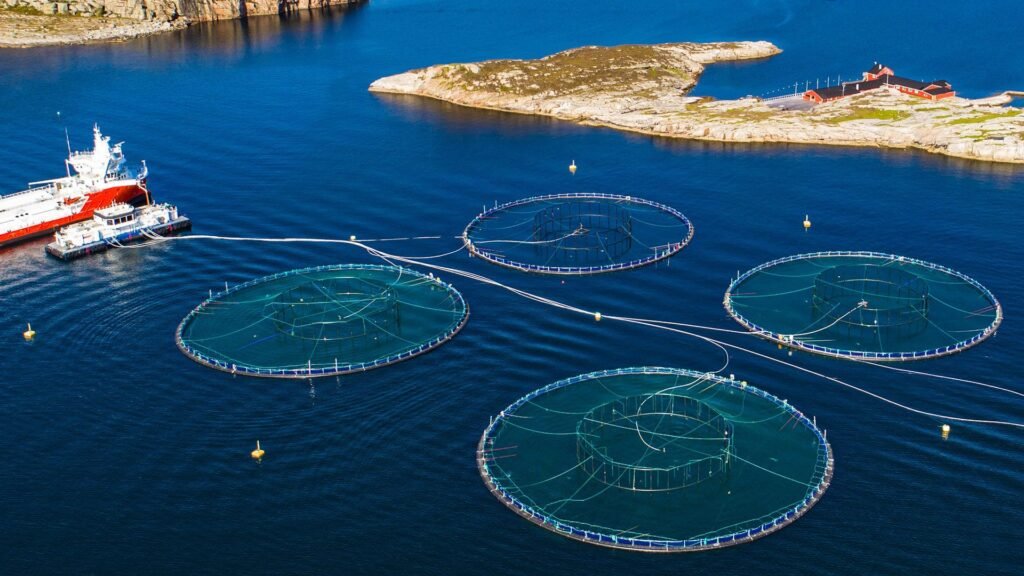As the world’s population edges closer to 10 billion by 2050, the demand for food is set to soar. At the same time, the oceans — which cover over 70% of the Earth’s surface — remain one of the most untapped sources of protein. Yet, they are under immense pressure. Overfishing, climate change, pollution, and unsustainable practices are rapidly degrading marine ecosystems. In this context, sustainable fisheries have emerged not just as a conservation effort, but as a critical pillar for ensuring global food security.
Sustainable fisheries refer to the responsible management of fish stocks and marine environments to maintain long-term fish populations and ecosystem health. They balance ecological integrity with economic and social needs, ensuring that fishing activities today do not compromise the ability of future generations to access marine resources. In other words, they’re about fishing smart — not more.
But this isn’t just a concern for environmentalists or coastal communities. Everyone — from urban dwellers to policymakers and global businesses — has a stake in this conversation. Sustainable fisheries aren’t just about saving fish; they’re about securing food, preserving livelihoods, and protecting the planet for generations to come.
The Role of Fisheries in Feeding the World
Globally, more than 3 billion people rely on seafood as a primary source of protein. In many low-income nations, fish is not just a dietary staple — it’s a lifeline. It’s affordable, accessible, and rich in essential nutrients like omega-3 fatty acids, vitamin D, and iodine.
Yet, while demand for seafood is growing, the supply is dwindling due to unsustainable practices. The Food and Agriculture Organization (FAO) reports that over one-third of the world’s fish stocks are overexploited. If left unchecked, this imbalance could lead to food shortages and economic instability, especially in regions where fish is a central part of the diet.
Sustainable fisheries offer a solution. By implementing science-based quotas, protecting nursery habitats, and reducing bycatch (the unintentional capture of non-target species), sustainable practices allow fish populations to regenerate and remain viable for the long term. When managed well, oceans can be one of the most productive food systems on Earth — endlessly renewable, if given the chance to thrive.
Sustainable Fisheries and Economic Stability
Beyond the dinner plate, sustainable fisheries play a crucial role in supporting economies. Globally, fisheries and aquaculture support the livelihoods of over 800 million people, many of whom live in developing nations.
When fisheries collapse due to overexploitation, entire communities face economic devastation. Jobs are lost, families are displaced, and poverty deepens. In contrast, sustainably managed fisheries create long-term employment opportunities — from fishers and processors to distributors and exporters.
Moreover, sustainable certifications and eco-labels can open up new markets. Consumers around the world are increasingly conscious of where their food comes from. Products that bear a sustainable seal, like that of Friend of the Sea, often fetch better prices and enjoy stronger brand loyalty.
Climate Resilience Through Sustainable Fishing
Climate change is already reshaping our oceans. Rising sea temperatures, acidification, and shifting currents affect fish migration, reproduction, and survival. This creates new challenges for food security.
Sustainable fisheries are better equipped to adapt. By maintaining diverse, healthy fish populations and ecosystems, they increase the resilience of marine life to environmental stress. They also reduce carbon emissions by optimizing fishing efforts, using fuel-efficient vessels, and promoting local consumption.
In this way, sustainable fisheries don’t just fight the effects of climate change — they work with nature to build a more adaptive, responsive food system.
Technology and Innovation Leading the Way
Modern sustainable fisheries are far from traditional. They’re increasingly turning to technology and data-driven solutions to track fish stocks, monitor illegal fishing, and ensure compliance.
Satellites, AI-powered sensors, and blockchain are now being used to bring transparency to the seafood supply chain. These tools help regulators enforce rules, empower consumers to make ethical choices, and assist fishers in maximizing their catch within sustainable limits.
Innovation is turning sustainable fishing from a challenge into an opportunity — one where science, business, and nature can align.
The Power of Policy and Global Cooperation
None of this progress is possible without effective governance. Policies that enforce sustainable fishing practices — such as seasonal closures, marine protected areas, and licensing systems — are essential.
Equally important is international cooperation. Fish don’t recognize political borders, and many species migrate across oceans. This means countries must work together to manage shared resources. Treaties, regional fishery management organizations (RFMOs), and global partnerships are vital in creating a cohesive approach to sustainable fisheries.
How Consumers Can Make a Difference
You don’t have to be a policymaker or marine biologist to support sustainable fisheries. Everyday choices matter. By choosing seafood products certified by organizations like Friend of the Sea, consumers can vote with their wallets for sustainability.
Supporting local fishers, reducing food waste, and educating others about sustainable seafood are also powerful actions. Each informed decision contributes to a system that values the ocean — not just as a resource, but as a shared heritage.
A Future Worth Fighting For
The ocean has fed humanity for millennia. But if we want it to continue doing so, we must change the way we interact with it. Sustainable fisheries offer a hopeful path forward — one where food security, economic development, and environmental health go hand in hand.







